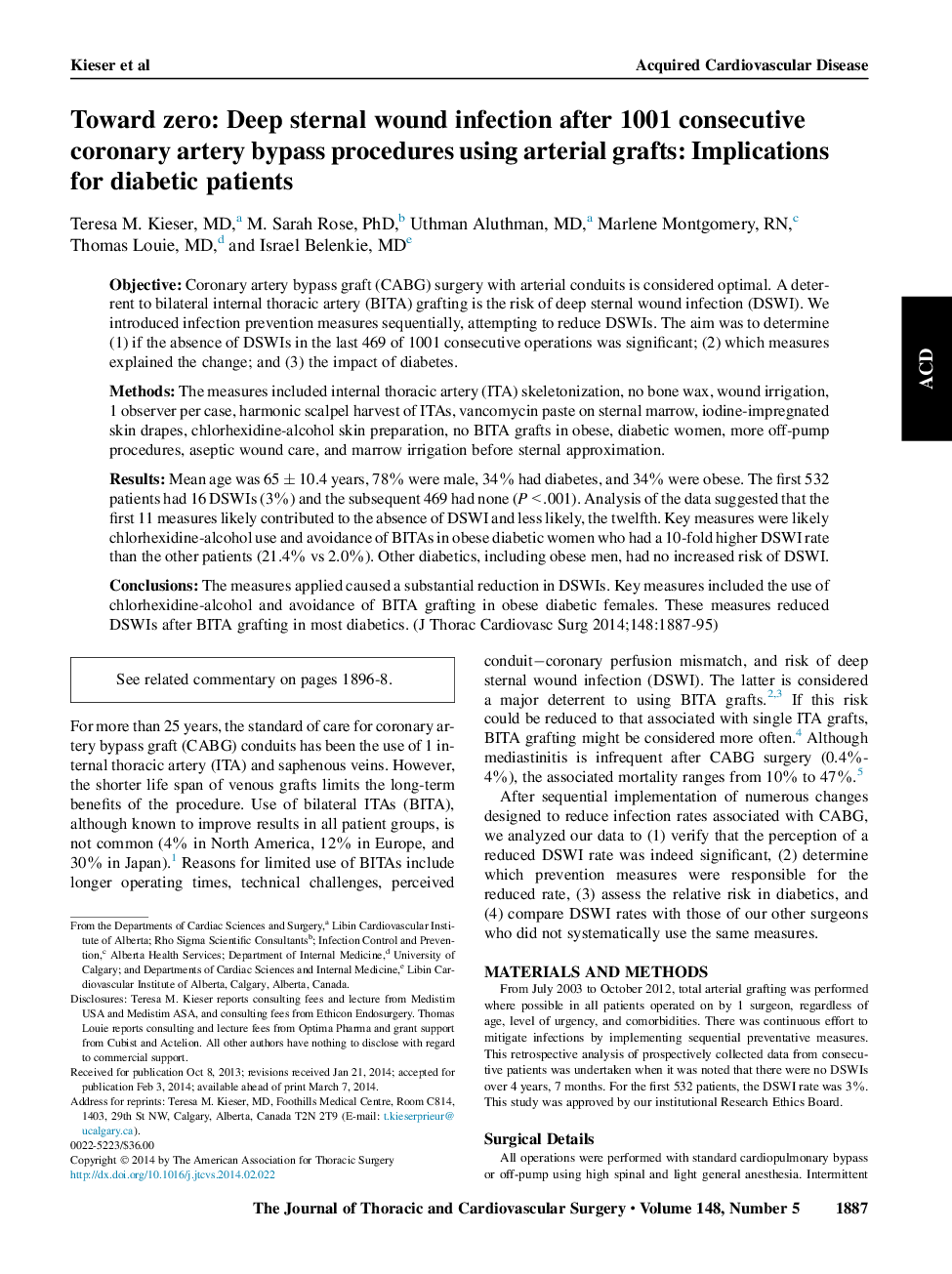| Article ID | Journal | Published Year | Pages | File Type |
|---|---|---|---|---|
| 5989463 | The Journal of Thoracic and Cardiovascular Surgery | 2014 | 9 Pages |
ObjectiveCoronary artery bypass graft (CABG) surgery with arterial conduits is considered optimal. A deterrent to bilateral internal thoracic artery (BITA) grafting is the risk of deep sternal wound infection (DSWI). We introduced infection prevention measures sequentially, attempting to reduce DSWIs. The aim was to determine (1) if the absence of DSWIs in the last 469 of 1001 consecutive operations was significant; (2) which measures explained the change; and (3) the impact of diabetes.MethodsThe measures included internal thoracic artery (ITA) skeletonization, no bone wax, wound irrigation, 1 observer per case, harmonic scalpel harvest of ITAs, vancomycin paste on sternal marrow, iodine-impregnated skin drapes, chlorhexidine-alcohol skin preparation, no BITA grafts in obese, diabetic women, more off-pump procedures, aseptic wound care, and marrow irrigation before sternal approximation.ResultsMean age was 65 ± 10.4 years, 78% were male, 34% had diabetes, and 34% were obese. The first 532 patients had 16 DSWIs (3%) and the subsequent 469 had none (P < .001). Analysis of the data suggested that the first 11 measures likely contributed to the absence of DSWI and less likely, the twelfth. Key measures were likely chlorhexidine-alcohol use and avoidance of BITAs in obese diabetic women who had a 10-fold higher DSWI rate than the other patients (21.4% vs 2.0%). Other diabetics, including obese men, had no increased risk of DSWI.ConclusionsThe measures applied caused a substantial reduction in DSWIs. Key measures included the use of chlorhexidine-alcohol and avoidance of BITA grafting in obese diabetic females. These measures reduced DSWIs after BITA grafting in most diabetics.
